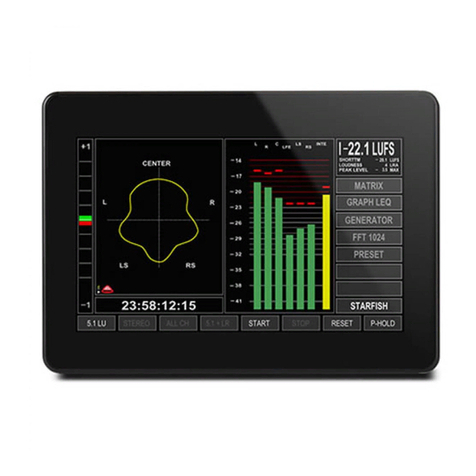INTRODUCTION ...............................................................................................................................................4
BEFORE YOU BEGIN…............................................................................................................................................... 4
ABOUT THIS MANUAL............................................................................................................................................... 4
OTHER IMPORTANT NOTES ....................................................................................................................................... 5
QUICK GUIDE ...................................................................................................................................................6
IF YOU JUST WANT TO GET GOING ............................................................................................................................... 6
BASIC OPERATION ...........................................................................................................................................7
MOUNTING YOUR DK METER.................................................................................................................................... 7
POWER SUPPLY....................................................................................................................................................... 7
NAVIGATION .......................................................................................................................................................... 7
SLIDING WINDOWS AND VIEWS ................................................................................................................................. 8
MENU NAVIGATION ................................................................................................................................................ 8
THE PRESET AND QUICK SETUP ........................................................................................................................9
STEP 1- PRESET LIST ................................................................................................................................................ 9
STEP 2-INPUT AND CHANNEL ORDER ....................................................................................................................... 10
STEP 3-SCALE AND LOUDNESS SETUP....................................................................................................................... 10
STEP 4-METER TEXT READ OUT ............................................................................................................................. 11
UPGRADE OPTION TRIAL ........................................................................................................................................ 12
HOW TO ….......................................................................................................................................................... 12
BACKLIGHT AND STANDBY....................................................................................................................................... 12
METER VIEWS –AN OVERVIEW .....................................................................................................................12
PORTRAIT BARGRAPH (VIEW 1) ............................................................................................................................... 12
GRAPHICAL LOUDNESS PORTRAIT (VIEW 2)................................................................................................................ 13
HORIZONTAL GRAPHICAL LOUDNESS (VIEW 3)............................................................................................................ 13
MSD VIEW MODE (VIEW 4) ................................................................................................................................... 13
FFT MODE (VIEW 5).............................................................................................................................................. 13
HORIZONTAL BARGRAPH (VIEW 6) ........................................................................................................................... 14
METER SETUP & AUDIO ROUTING .................................................................................................................15
AUTOMATED METER SETUP .................................................................................................................................... 15
CLOCK SETUP AND HIERARCHY................................................................................................................................. 15
AUDIO ROUTING SETUP.......................................................................................................................................... 15
THE ADVANCED SETUP MENU........................................................................................................................18
THE SETUP MENU ................................................................................................................................................. 18
ABOUT –USER MODE &USER RESTRICTIONS ............................................................................................................ 18
PRESET –FOLDER.................................................................................................................................................. 19
MATRIX OUTPUT ASSIGN –SELECTING YOUR METER SOURCE........................................................................................ 19
METER SETUP ...................................................................................................................................................... 19
STARFISH™SETUP ................................................................................................................................................ 20
LOUDNESS PRESET................................................................................................................................................. 21
LOUDNESS SETUP .................................................................................................................................................. 21
LOUDNESS OPTION................................................................................................................................................ 23
LABELS ASSIGN ..................................................................................................................................................... 24
AUDIO GLOBAL..................................................................................................................................................... 24
INSTRUMENTS & DISPLAY TOOLS ..................................................................................................................25
PORTRAIT BAR-GRAPHS .......................................................................................................................................... 25
EYE WIDTH .......................................................................................................................................................... 25
AES LOCK INDICATION ........................................................................................................................................... 26
GONIOMETER –VECTORSCOPE ................................................................................................................................ 26
PHASE CORRELATION.............................................................................................................................................. 26




























